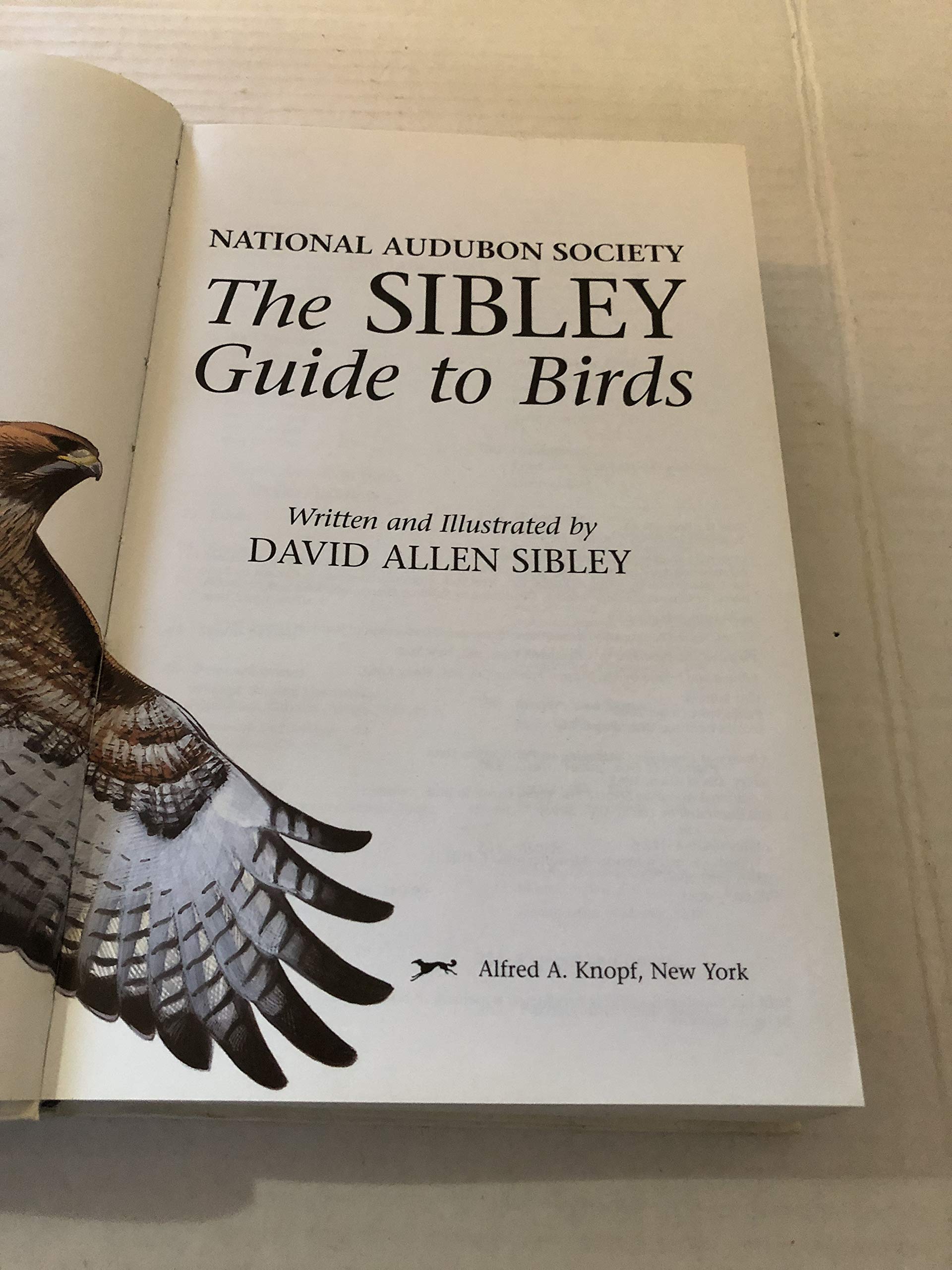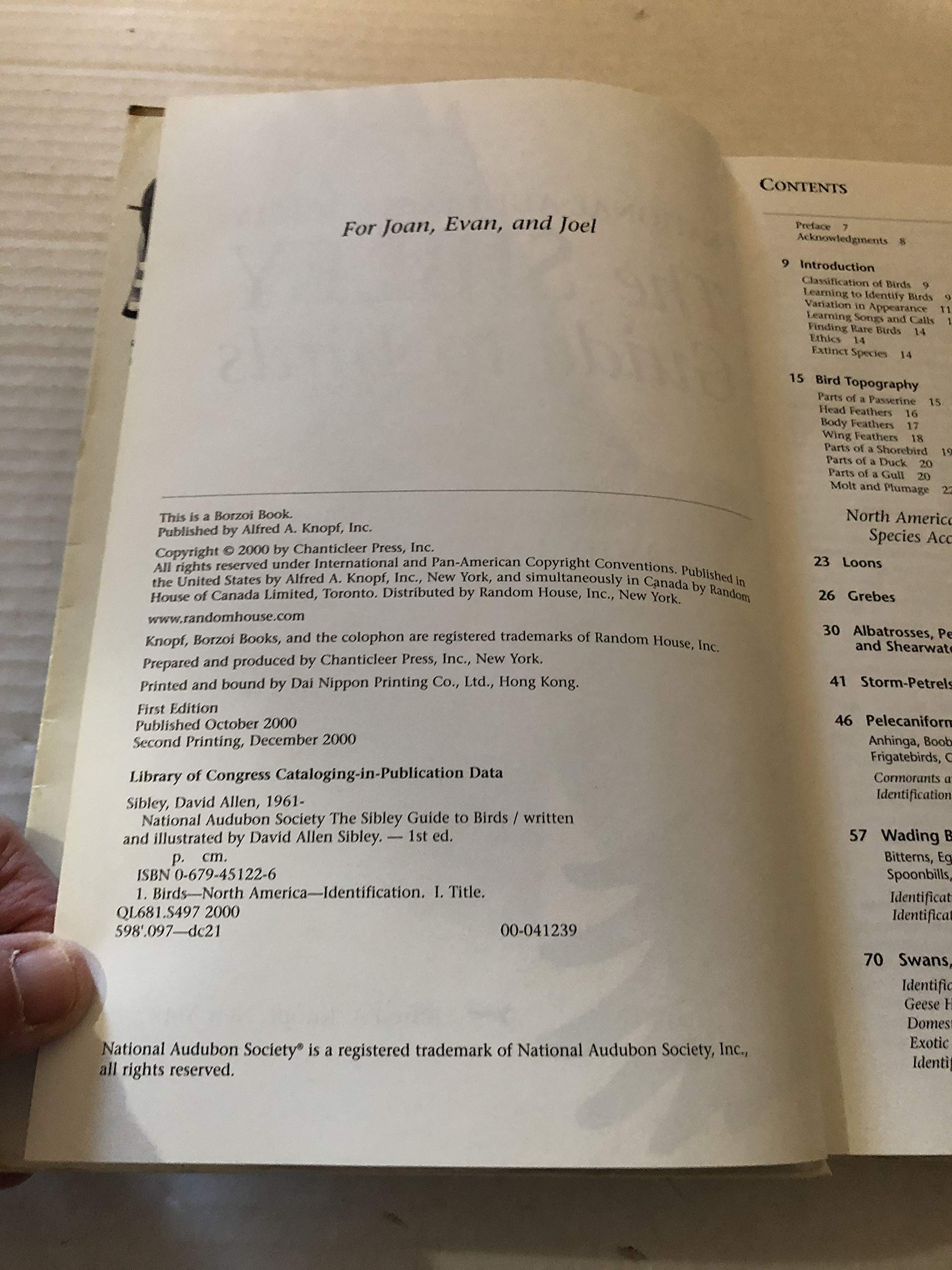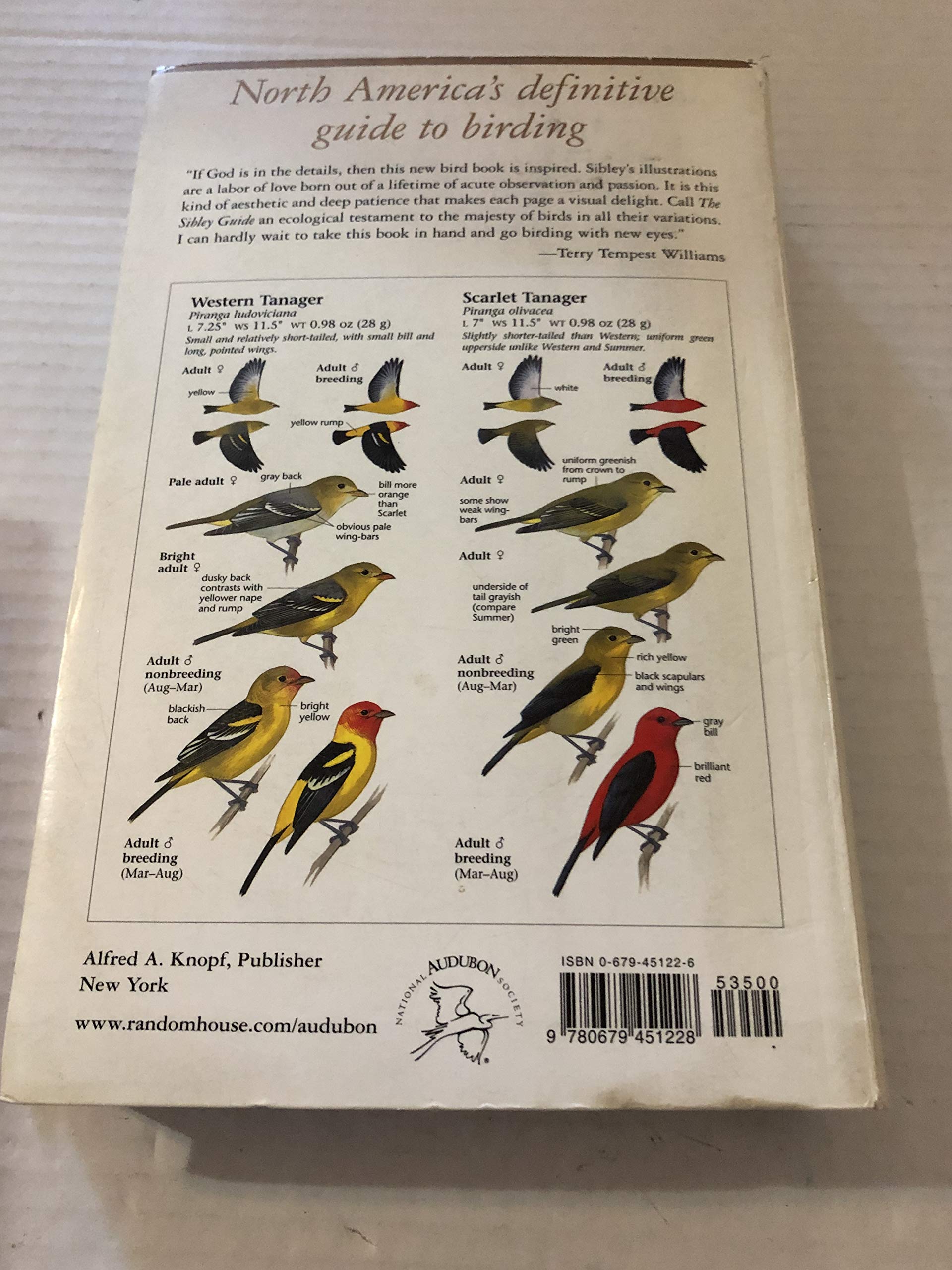




The Sibley Guide to Birds
J**
Superior easy to use field guide to birds
My husband and I use this book when we are birding and like it. He is very experienced and I am a novice.
M**.
Get this book!
The arrival of this book gives North American birders what their European counterparts have enjoyed for some time now - a first rate, superbly illustrated bird guide. The artwork by the author, David Sibley, is equal to the best work in the better European guides.This is work by someone who knows what birds look like. And can convey that knowledge through a drawing. The colors are clear and bright (the way so many birds actually look when seen well) and though occasionally they may seem a touch off, they are probably as accurate as modern printing will allow. The figures are a refreshing change from the often too dark and dingy, over detailed, and awkward images in some other guides, North American or otherwise.Where feather detail is needed, it's shown, see p. 186, Western Sandpiper, for example. The birds are accurately posed, and, equally important, they are well portrayed in terms of head and body shape and "facial" expression. The printing in my copy is excellent and tack sharp.The organization and layout for this book is outstanding, and though it may remind some of the equally excellent Birds of Europe by Svensson, Mullarney, and Zetterstrom, it differs somewhat. For one thing, Sibley seems to treat birds more in terms of natural groupings than as completely individual entities. This reflects the more fluid context that many forms exist in, rather than our rigid and heirarchical taxonomies.The text on the top of many pages refers to both (usually) of the species shown, and there are many other extra bits of information scattered throughout like this. Birds are shown by age and sex from top to bottom of the page. If you want to compare juvenile plumages of two similar species, you can find them both at the top of the column, just under the images of flying birds. All the birds on a plate generally face the same direction too, facilitating easy comparisons.I would have liked to see more information on habitat and especially status, even though the latter is more subjective and can vary throughout a species' range. But these are minor complaints and the book really stands up as it is.It's true, you won't be carrying this book in your pockets - unless they are particularly large ones! But it's no larger than many of the other international guides out, and lighter than many of them. Stick it in a book cover and drop it in your day bag or pack. You won't notice it! I recently carried one of the heavy international field guides for a couple of months in my pack. It wasn't the problem I thought it might be.Probably the best technique for birding is to just leave it in your pack or car most of the time anyway, having studied it at home and gotten an idea of what to expect on the outing. But even very experienced birders may want to consult their guide on the spot occasionally. This one is no doorstop, so you'll be able to take it along.Because of its excellent organization, outstanding illustrations, and up to date information, this is now the best bird guide for North America. Both beginners and experts will no doubt find it very useful. Thanks and congratulations to the author for such good work, and to all you birders out there, get this book!
F**R
Sibley vs. National Geo
I first bought NG Field Guide to The Birds after reading a lot of reviews, but then had a chance to use The Sibley Guide to the Birds at a B&B. I instantly liked Sibley better and bought one. Here is why:* Before launching into each bird, Sibley gives an introduction about the bird family: # of species, physical looks shared by the family, habitat, and other bird families that have similar looks* After the family introduction, Sibley has one page showing the illustrations of all species in the family. It is easier to quickly glance all the possible birds in the family to see which one looks similar to the bird saw in the field. NG does not has this all inclusive illustration page.* Sibley's color is subtle and realistic. NG's is very intense and its contrast too sharp (as other reviewers pointed out).* Sibley's illustrations are better organized than NG's. Sibley's illustrations of a specie is listed in the order of 1st year, 2nd yr, 3rd yr, breeding, non breeding male, female. All the birds point to the right. NG's illustrations are clustered together, sizes are all over the place and the birds point left and right.* What really bothered me is that NG often skips the illustration of non breeding adult male (dull looking, similar to female or juvenile) and only show breeding male (very colorful, drastically different from female). Because of this, I was not able to identify birds like harlequin duck, green/blue winged teals using NG.* Sibley's identification keys are clearly marked on the illustration. One does not need to read through the small text to find them like in NG.NG has a bit of advantage over Sibley on the following points:* NG is a big smaller and lighter. But as I leave the guide in my car (even NG is too heavy to carry), Sibley's weight is not an issue for me. If you want to carry the guide, I'd recommend Sibley's field guide to Easter & Western NA birds. They are organized in the same way like Sibley's, but lighter and smaller.* NG gives more habitat information about each bird species.* As NG is a paperback, it is easier to flip through the pages.* The bird family marking at the edge of the book and the index page in the end make it very easy to locate the bird family in the book. This is particularly useful when I need to locate the identified bird in the book so that I can save its accurate info into my excel sheet.In short, Sibley is better for identification, and NG is better for documenting the bird. It is fun to have both. But if I can only have one bird guide book, I would get Sibley's.
A**R
Great book for learning
This book has it all and every bird lover should own it
G**Z
La mejor de mis guías
Magnifica guía, la tengo en la Tablet, pero en papel es mucho más practica y visual
M**S
Una de las mejores guías norteamericanas.
Uno de los mejores libros de identificación de las Aves norteamericanas. Todos los dibujos son de muy buena calidad y las descripciones y mapas excelentes. Totalmente recomendable.
A**E
Five Stars
Excellent book just what I was looking for
R**R
Toller Feldführer der sich besonders für die Bestimmung von Ausnahmeerscheinungen in der Westpaläarktis eignet
Toller Feldführer der speziell auf den Azoren für nearktische Ausnahmeerscheinungen sehr hilfreich ist! Sehr gute Detailzeichnungen und die Gegenüberstellung von ähnlichen Arten ist sehr hilfreich! Allerdings reicht hier, wie wir feststellen mussten, der Sibley Eastern North America.
Trustpilot
2 weeks ago
1 month ago